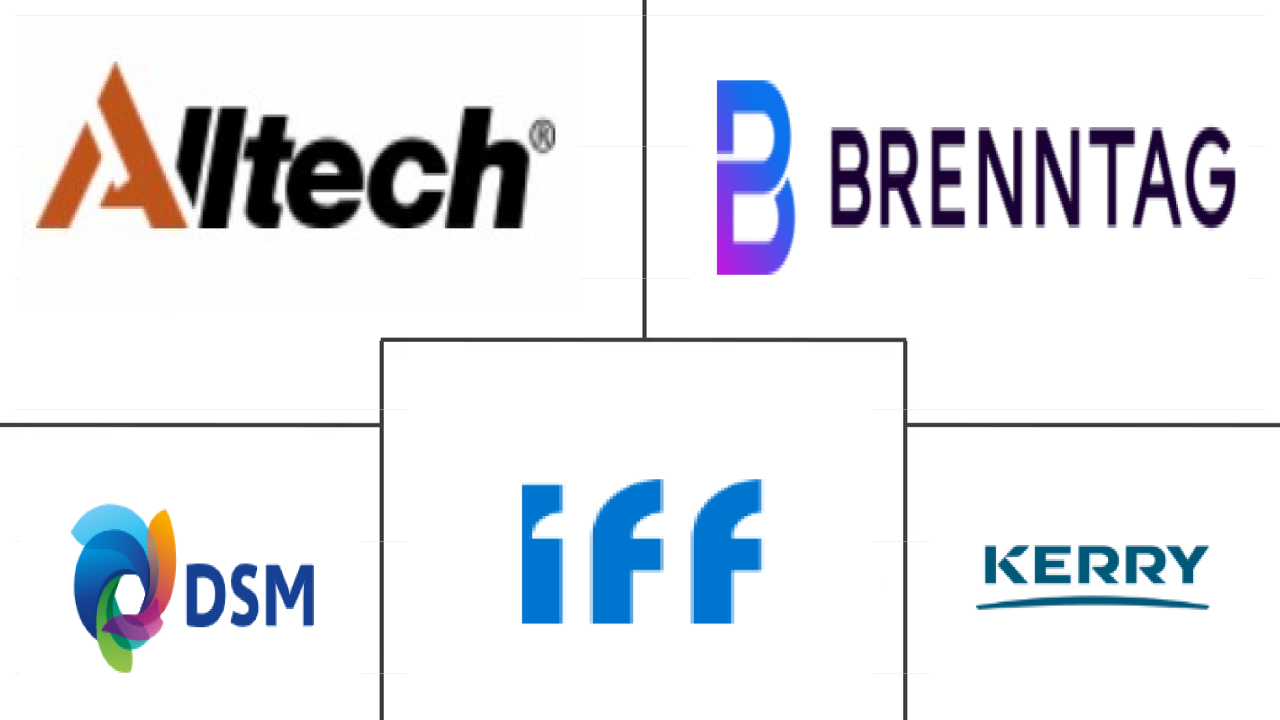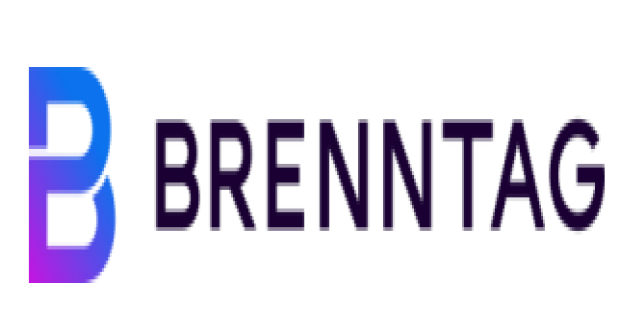Market Size of middle east feed enzymes Industry
| Icons | Lable | Value |
|---|---|---|
|
|
Study Period | 2017 - 2029 |
|
|
Market Size (2024) | USD 32.09 Million |
|
|
Market Size (2029) | USD 37.86 Million |
|
|
Largest Share by Sub Additive | Carbohydrases |
|
|
CAGR (2024 - 2029) | 3.36 % |
|
|
Largest Share by Country | Saudi Arabia |
|
|
Market Concentration | Low |
Major Players |
||

|
||
|
*Disclaimer: Major Players sorted in no particular order |
Middle East Feed Enzymes Market Analysis
The Middle East Feed Enzymes Market size is estimated at 32.09 million USD in 2024, and is expected to reach 37.86 million USD by 2029, growing at a CAGR of 3.36% during the forecast period (2024-2029).
32.09 Million
Market Size in 2024 (USD)
37.86 Million
Market Size in 2029 (USD)
0.45 %
CAGR (2017-2023)
3.36 %
CAGR (2024-2029)
Largest Market by Sub-Additive
47.89 %
value share, Carbohydrases, 2023
It is the largest segment due to its ability to increase the intake of protein, minerals, and lipids from feed and help in the digestion of non-soluble polysaccharides.
Largest Market by Country
40.14 %
value share, Saudi Arabia, 2023
Saudi Arabia is the largest country in the region because of the higher feed production and demand from the increasing market for meat and dairy products in the country.
Fastest-growing Market by Sub-Additive
3.39 %
Projected CAGR, Phytases, 2024-2029
It is the fastest-growing segment due to the increase in the demand for meat and growing awareness about the benefits of healthy animal diets, especially for poultry.
Fastest-growing Market by Country
3.74 %
Projected CAGR, Iran, 2024-2029
With the increasing demand for meat and awareness of healthy diets, the demand for feed enzyme usage has increased. Therefore, Iran is the fastest-growing country in the region.
Leading Market Player
7.11 %
market share, Brenntag SE, 2022

Brenntag SE is the largest company in the region. It acquired regional player Trychem FZCO and expanded its product portfolio for the regional market.
- The feed enzymes market in the Middle East is a small but growing segment of the overall feed additives market. In 2022, it accounted for only 3.6% of the feed additives market. However, the advantages of using feed enzymes to increase nutrient availability for animals, especially when cereal prices are high, make it a promising market.
- The market experienced a decline of 6.2% in 2019 compared to 2018 due to a decrease in feed production, which was directly related to the usage of feed additives. Saudi Arabia was the largest country in the feed enzymes market, accounting for a 40.2% share in 2022, owing to the country's higher feed production and demand for meat and dairy products.
- Among all the feed enzymes, carbohydrases were the most significant in terms of market value, accounting for 47.9% of the feed enzymes market in 2022. Carbohydrases are preferred because of their ability to increase the intake of protein, minerals, and lipids from animal feed. The largest animal type segment in the region was poultry birds, accounting for 57.9% of the feed carbohydrases market in 2022. The usage was associated with their digestion of non-soluble polysaccharides.
- The fastest-growing country in the Middle East during the forecast period is expected to be Iran, registering a CAGR of 3.7%. Phytases are expected to be the fastest-growing segment in the region, registering a CAGR of 3.4% during the forecast period.
- The increase in the awareness of the usage of feed additives and the demand for meat and livestock are expected to be the major drivers of the feed enzymes market in the region.
- In 2022, feed enzymes held a 3.6% share by value in the Middle Eastern feed additives market, representing an increase of over 2.8% from the previous year. However, the market witnessed a slight dip in 2019-2020, mainly due to the impact of the COVID-19 pandemic, which disrupted global trade and local supply chains, resulting in reduced feed production.
- Saudi Arabia held the largest share of the Middle Eastern feed enzymes market in 2022, accounting for around USD 12.1 million by value in the market, followed by Iran with USD 8.0 million. The high adoption of feed additives in animal diets in Saudi Arabia resulted in the highest consumption in the country compared to others in the region.
- Poultry birds were the largest consumers of feed enzymes in the Middle Eastern region in 2022, accounting for a 57.5% share by value in the market, followed by ruminants and aquaculture with 39.7% and 2.2% shares, respectively. The growth of the enzymes market is driven by the region's livestock-rearing technologies, which aim to limit meat imports and encourage water-scarce countries to benefit from their meat industries.
- In 2022, the Middle Eastern region produced around 24 million metric tons of compound feed for all animal types, with Iran alone accounting for more than 45% of the share. This high production was attributed to the country's large animal population, including more than 18% of ruminant cattle in the Middle Eastern region in 2021.
- The demand for feed enzyme usage has increased with the rising demand for meat and growing awareness of healthy diets in animal feeds. The Middle Eastern region is expected to witness strong growth in the market, recording a CAGR of 3.4% during 2023-2029.
Middle East Feed Enzymes Industry Segmentation
Carbohydrases, Phytases are covered as segments by Sub Additive. Aquaculture, Poultry, Ruminants, Swine are covered as segments by Animal. Iran, Saudi Arabia are covered as segments by Country.
- The feed enzymes market in the Middle East is a small but growing segment of the overall feed additives market. In 2022, it accounted for only 3.6% of the feed additives market. However, the advantages of using feed enzymes to increase nutrient availability for animals, especially when cereal prices are high, make it a promising market.
- The market experienced a decline of 6.2% in 2019 compared to 2018 due to a decrease in feed production, which was directly related to the usage of feed additives. Saudi Arabia was the largest country in the feed enzymes market, accounting for a 40.2% share in 2022, owing to the country's higher feed production and demand for meat and dairy products.
- Among all the feed enzymes, carbohydrases were the most significant in terms of market value, accounting for 47.9% of the feed enzymes market in 2022. Carbohydrases are preferred because of their ability to increase the intake of protein, minerals, and lipids from animal feed. The largest animal type segment in the region was poultry birds, accounting for 57.9% of the feed carbohydrases market in 2022. The usage was associated with their digestion of non-soluble polysaccharides.
- The fastest-growing country in the Middle East during the forecast period is expected to be Iran, registering a CAGR of 3.7%. Phytases are expected to be the fastest-growing segment in the region, registering a CAGR of 3.4% during the forecast period.
- The increase in the awareness of the usage of feed additives and the demand for meat and livestock are expected to be the major drivers of the feed enzymes market in the region.
| Sub Additive | |
| Carbohydrases | |
| Phytases | |
| Other Enzymes |
| Animal | |||||||
| |||||||
| |||||||
| |||||||
| Swine | |||||||
| Other Animals |
| Country | |
| Iran | |
| Saudi Arabia | |
| Rest of Middle East |
Middle East Feed Enzymes Market Size Summary
The Middle East Feed Enzymes Market is a burgeoning segment within the broader feed additives industry, characterized by its potential to enhance nutrient availability for animals, particularly in times of high cereal prices. Despite its relatively small size, the market is poised for growth, driven by increasing awareness of feed additives and rising demand for meat and livestock. Saudi Arabia leads the market, bolstered by its substantial feed production and demand for meat and dairy products. Carbohydrases dominate the market due to their efficacy in improving the absorption of protein, minerals, and lipids, with poultry birds being the largest consumers. The market's expansion is further supported by advancements in livestock-rearing technologies aimed at reducing meat imports and optimizing local meat production.
The region's feed enzymes market is expected to experience steady growth, with Iran anticipated to be the fastest-growing country. The poultry industry, a significant component of the agricultural sector, continues to expand, driven by increased production and consumption of poultry products. Investments in the poultry sector, such as those by Saudi Arabia's Almarai company, and the growth of the aquaculture industry, particularly in Iran, are key factors contributing to market expansion. The aquaculture sector, with Iran as a leading producer, benefits from the region's freshwater resources, supporting the cultivation of various aquaculture species. The market remains fragmented, with major players like Alltech, Brenntag SE, DSM Nutritional Products AG, IFF, and Kerry Group Plc actively participating in the region's growth trajectory.
Middle East Feed Enzymes Market Size - Table of Contents
-
1. MARKET SEGMENTATION (includes market size in Value in USD and Volume, Forecasts up to 2029 and analysis of growth prospects)
-
1.1 Sub Additive
-
1.1.1 Carbohydrases
-
1.1.2 Phytases
-
1.1.3 Other Enzymes
-
-
1.2 Animal
-
1.2.1 Aquaculture
-
1.2.1.1 By Sub Animal
-
1.2.1.1.1 Fish
-
1.2.1.1.2 Shrimp
-
1.2.1.1.3 Other Aquaculture Species
-
-
-
1.2.2 Poultry
-
1.2.2.1 By Sub Animal
-
1.2.2.1.1 Broiler
-
1.2.2.1.2 Layer
-
1.2.2.1.3 Other Poultry Birds
-
-
-
1.2.3 Ruminants
-
1.2.3.1 By Sub Animal
-
1.2.3.1.1 Beef Cattle
-
1.2.3.1.2 Dairy Cattle
-
1.2.3.1.3 Other Ruminants
-
-
-
1.2.4 Swine
-
1.2.5 Other Animals
-
-
1.3 Country
-
1.3.1 Iran
-
1.3.2 Saudi Arabia
-
1.3.3 Rest of Middle East
-
-
Middle East Feed Enzymes Market Size FAQs
How big is the Middle East Feed Enzymes Market?
The Middle East Feed Enzymes Market size is expected to reach USD 32.09 million in 2024 and grow at a CAGR of 3.36% to reach USD 37.86 million by 2029.
What is the current Middle East Feed Enzymes Market size?
In 2024, the Middle East Feed Enzymes Market size is expected to reach USD 32.09 million.

